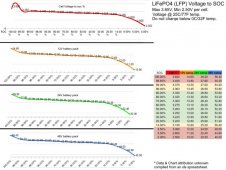"I've just received another batch of 4x 280's. I'm going to experiment a bit with these 1st, after they thaw out nicely. (sitting in cold warehouses, trucks - it is -14C outside right now,) I have a
Yaorea 1035+ IR Tester and a
TekPower TP1540E Bench PS which will let me do charge & discharge per cell tests to measure the IR at different points, then a few other tests depending on the outcome. It also depends on what my running 280 packs because I'm finishing my Thrashing of them this week. May end up swapping a cell or two around. I have 1 cell per 280 pack that Run High, fast after they hit 3.460 but there is possibly another factor that I am investigating."



